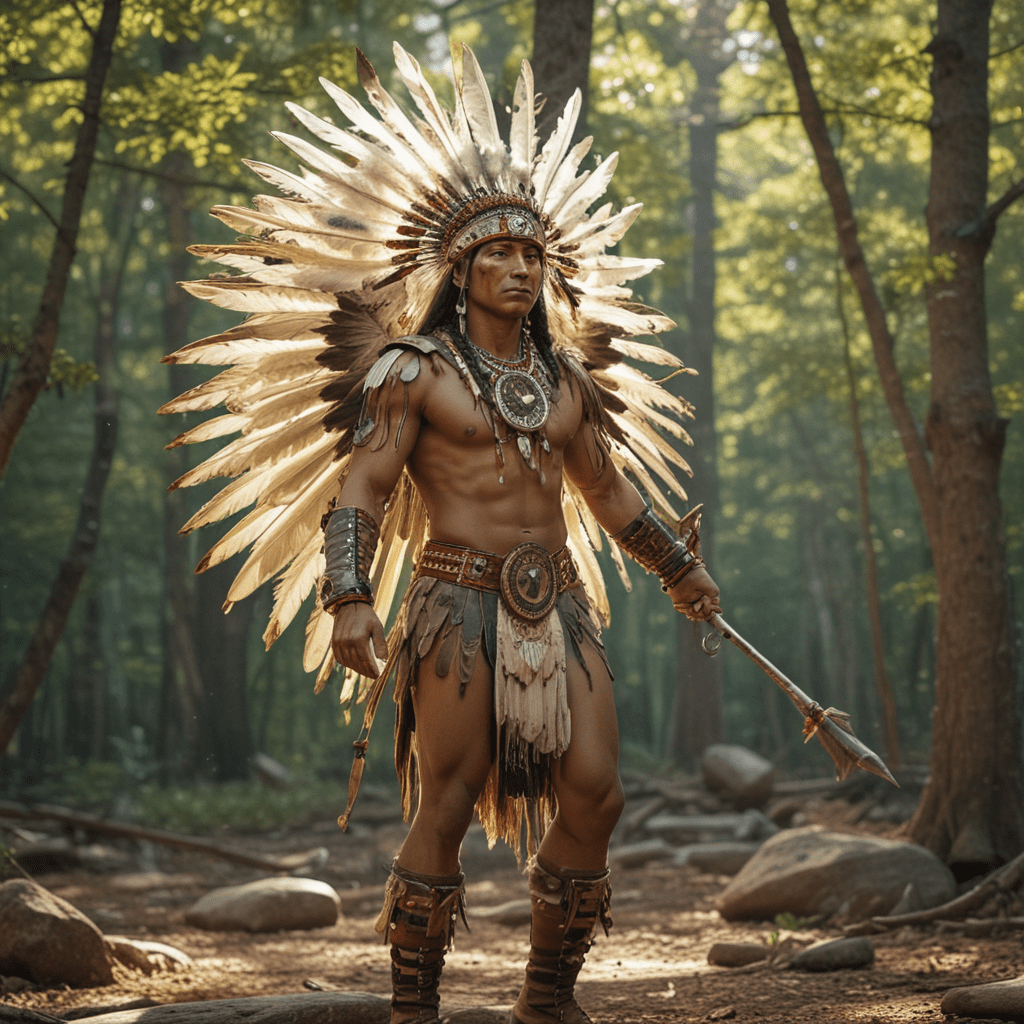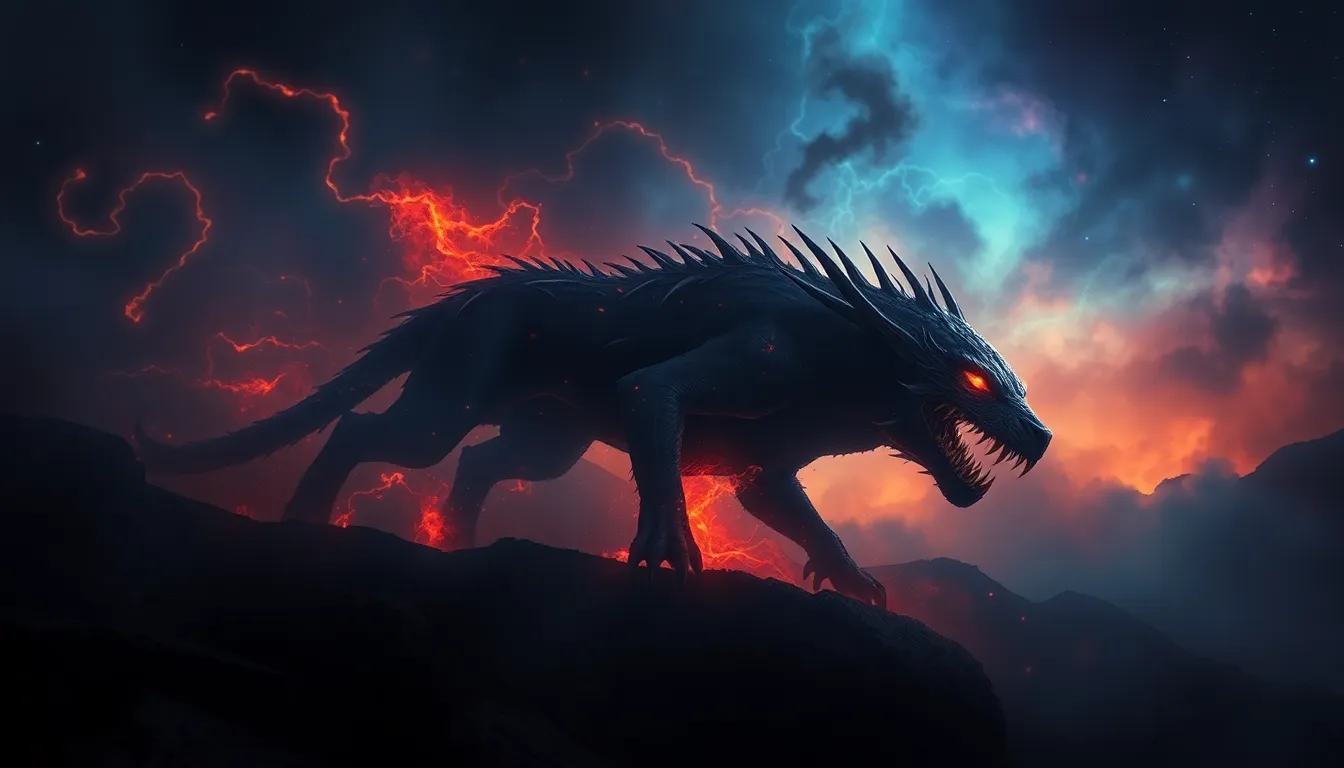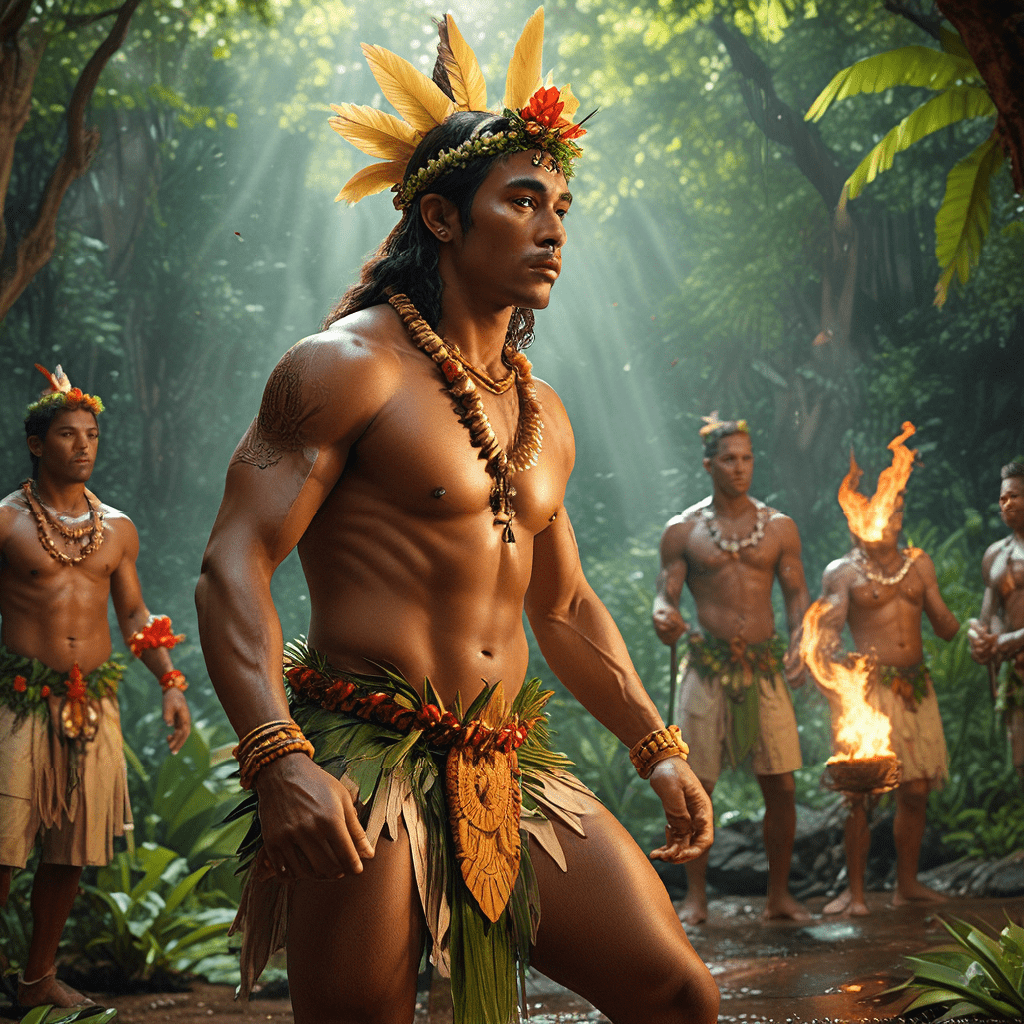Origins and Creation: The Birth of the Menominee World
The Menominee Nation, an indigenous tribe from the Great Lakes region, holds a rich mythology that narrates the origins and creation of their world. Their creation story begins with a powerful spirit named Mesakamkwä, who existed before all else. Mesakamkwä dreamt of a world populated by living beings and set out to create it.
From the fragments of his dreams, he fashioned the Earth, sky, and waters. He then created the first humans, the Menominee people, and bestowed upon them the gift of language, culture, and knowledge. Mesakamkwä also created other spirits and beings, including the Thunderers, the Earthmaker, and the culture hero Manabus, who played significant roles in shaping the world and its inhabitants.
The Earth and Its Inhabitants: A Sacred Landscape
The Menominee mythology depicts the Earth as a sacred and bountiful place teeming with life. It is home to a vast array of animals, plants, and natural elements, each imbued with its own powers and significance. The Menominee people have a deep connection to the natural world, believing that all living beings are interconnected and interdependent.
According to their myths, the Earth was created as a place of harmony and balance. The animals and plants were given specific roles and responsibilities to maintain the well-being of the world. The Menominee people lived in close connection with the natural world, respecting its gifts and honoring its spirits.
Mythical Creatures and Beings: Guardians and Protectors
The Menominee mythology is filled with a variety of mythical creatures and beings who play important roles in the world's creation and ongoing existence. These beings include the Thunderers, powerful spirits who control the weather and bring both life-giving rain and destructive storms. The Earthmaker, another powerful spirit, is responsible for shaping the land and creating the animals and plants.
Manabus, the culture hero, is a trickster figure who often helps and hinders the Menominee people in their quests. Other mythical beings include the Windigo, a dangerous and malevolent spirit that represents famine and starvation, and the Jackalope, a mythical creature with antlers like a deer and the body of a rabbit.
Medicine and Healing: A Sacred Practice
Medicine and healing play a central role in the Menominee mythology. The Menominee believed that illness and disease were caused by spiritual imbalances or the influence of malevolent spirits. Traditional healers, known as shamans or medicine men, were skilled in using herbs, rituals, and spiritual practices to restore balance and promote healing.
The Menominee mythology also includes stories about the origins of medicine and the powers of certain plants and animals to heal. These stories emphasize the interconnectedness of all living beings and the importance of respecting the natural world.
The Spirit World: A Realm of Ancestors and Spirits
The Menominee believed in a spirit world, a realm inhabited by the spirits of ancestors, animals, and other beings. This spirit world is closely connected to the physical world, and spirits can interact with humans through dreams, visions, and ceremonies.
Natural Phenomena: Myths and Legends
The Menominee mythology explains the natural phenomena that occur in the world, such as the changing seasons, the movement of the stars, and the occurrence of storms. These phenomena are often attributed to the actions of supernatural beings or spirits. For example, the Thunderers are believed to control the weather, and the Windigo is said to cause famine and starvation.
Transformation and Rebirth: Cycles of Change
The Menominee mythology recognizes the transformative power of nature and the importance of rebirth and renewal. Stories of animals transforming into humans, plants growing from the remains of the dead, and the cyclical nature of the seasons all emphasize the interconnectedness of life and death. These stories remind the Menominee people that even in the face of adversity, there is always hope for transformation and rebirth.
The Role of Animals in Mythology: Spirit Guides and Teachers
Animals play a significant role in Menominee mythology, often serving as spirit guides, teachers, or protectors. The appearance of certain animals in dreams or visions can be interpreted as messages from the spirit world, and the characteristics of animals are often used to teach moral lessons. For example, the bear is seen as a symbol of strength and courage, while the wolf represents loyalty and cooperation.
Moral Lessons and Beliefs: Guiding Principles
The Menominee mythology contains many stories that teach moral lessons and provide guidance for living a good and harmonious life. These stories emphasize the importance of respect, kindness, honesty, and courage. They also caution against greed, selfishness, and other negative behaviors. By listening to these stories and following their teachings, the Menominee people strive to live in balance with each other and with the natural world.
Preservation and Cultural Significance: A Living Legacy
The mythology of the Menominee Nation is a living legacy that continues to play an important role in their culture and identity. These stories are passed down from generation to generation, ensuring that the traditions, beliefs, and values of the Menominee people are preserved. By sharing their mythology with others, the Menominee people also contribute to a greater understanding of the diverse cultural heritage of North America.
Frequently Asked Questions (FAQs):
Q: Who created the world according to Menominee mythology?
A: Mesakamkwä, a powerful spirit, is believed to have dreamt and created the world.
Q: What is the role of animals in Menominee mythology?
A: Animals are considered spirit guides, teachers, and protectors, often symbolizing different moral lessons.
Q: How do the Menominee people explain natural phenomena?
A: Many natural phenomena are attributed to the actions of supernatural beings or spirits, such as the Thunderers controlling the weather.
Q: What is the significance of transformation in Menominee mythology?
A: Transformation stories emphasize the interconnectedness of life and death and the hope for renewal even in the face of adversity.
Q: How is the mythology of the Menominee Nation preserved?
A: Stories are passed down from generation to generation, ensuring that the traditions, beliefs, and values of the Menominee people remain alive.



